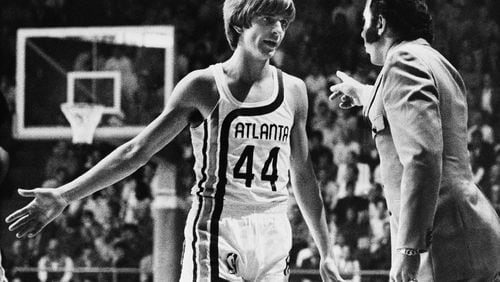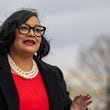The Hawks will retire the uniform number of Pete Maravich, according to a person familiar with the situation.
A date and details of when the No. 44 will be raised to the rafters of Philips Arena have not been finalized.
Maravich, a member of the Naismith Memorial Basketball Hall of Fame, played for three NBA teams before injuries forced his retirement in 1980. He played for the Hawks from 1970-74. He also played for the New Orleans/Utah Jazz and the Boston Celtics.
Maravich will join Bob Pettit (No. 9), Lou Hudson (23), Dominique Wilkins (No. 21) and Dikembe Mutombo (No. 55) as players to have their uniform number retired by the Hawks organization. His No. 7 has been retired by the Utah Jazz and the New Orleans Pelicans and his No. 23 has been retired by LSU.
Known as Pistol Pete, Maravich was a five-time NBA All-Star, including 1973 and 1974 with the Hawks. He twice All-NBA first team and All-NBA second team. He led the NBA in scoring in 1977 with the Jazz. He was named to the NBA’s 50th Anniversary All-Time team and inducted into the Basketball Hall of Fame in 1987.
Maravich died at the age of 40 of heart failure while playing pick-up basketball Jan. 5, 1988.
The Hawks drafted Maravich with the third overall pick in the 1970 NBA Draft. He played 302 games for the Hawks and averaged 24.3 points, 5.6 assists and 4.2 rebounds in 37.2 minutes. He had a field-goal percentage of .448.
During his 10-year NBA career, he played in 658 games and averaged 24.2 points.
Maravich starred at LSU from 1968-70. He is the NCAA Division I all-time leading scorer with 3,667 points, despite playing only three seasons and in an era with no 3-point shot. He was the Division I leading scorer all three years and averaged 43.8, 44.2 and 44.5 points each season, respectively. He was the College Player of the Year in 1969 and 1970 and a three-time first-team All-American.







